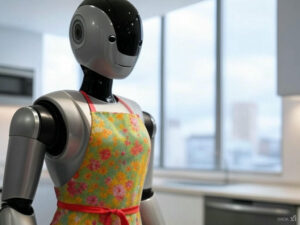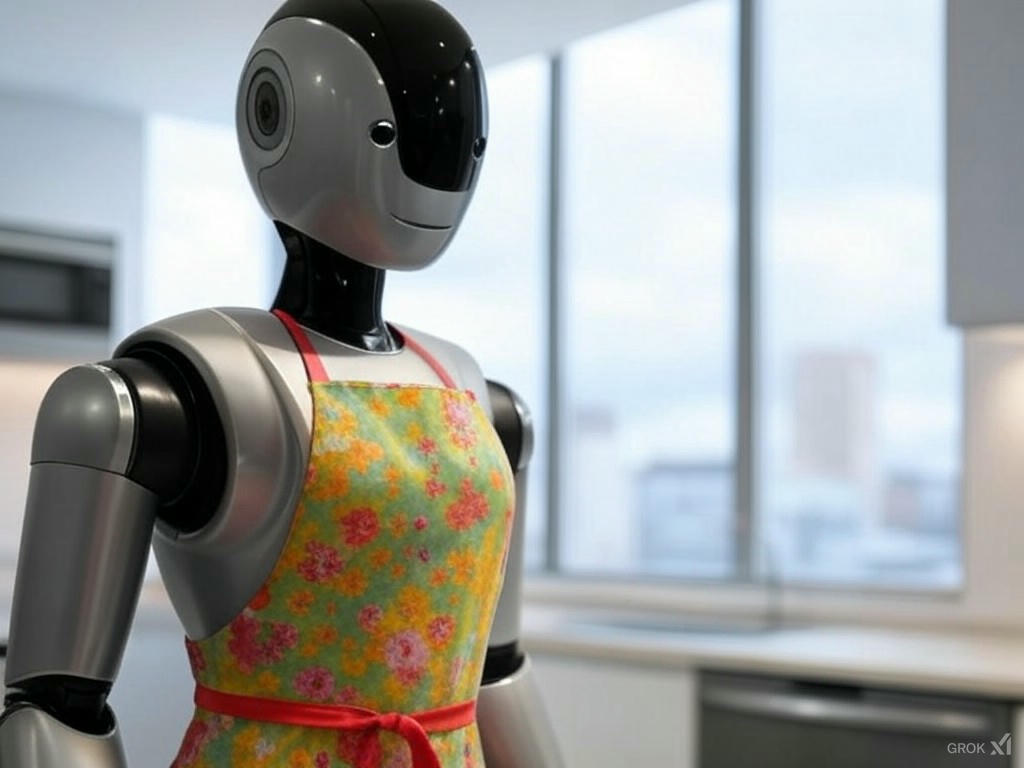The Future of Home Robots: From Tesla Optimus to the Real-Life Rosie

Imagine walking into your home after a long day at work, greeted not by silence but by a friendly, efficient robot ready to take on daily chores. This vision, once the stuff of ’60s “The Jetsons,” is inching closer to reality with developments like Tesla’s Optimus. Here’s a look at how far we’ve come and where we might be heading:
The Dream of Rosie, The Robot Maid
For many, the character Rosie from “The Jetsons” epitomized the dream of a future where technology would handle mundane tasks. Rosie was more than a robot; she was a family member, with her own personality, humor, and an almost human-like understanding of her family’s needs. This vision set a high bar for what we might expect from home robotics:
Efficiency: Rosie could clean, cook, and manage the household with ease.
Personality: She had unique traits and a sense of humor, that made her endearing, not just functional.
Integration: Rosie was seamlessly part of the family dynamic, responding to their needs proactively. She would cook, clean, answer the door and even put flowers on the table without even being asked to do it.
Tesla’s Optimus: A Step Toward Reality
Tesla’s entry into robotics with the Optimus project aims to bring some of these ideas into the physical world. Here’s what we know about Optimus:
Design and Capabilities: Optimus is designed to perform a range of tasks from simple to complex, potentially including household chores. With Tesla’s focus on AI, it’s conceivable that Optimus could one day learn from its environment much like Rosie did. With a suite of sensors, including cameras, Optimus has the capability to see its environment in depth, detect obstacles, and interact safely with humans.
Humanoid Form: Unlike many industrial robots, Optimus’s humanoid shape allows for interaction in human-centric environments, potentially making it suitable for home use. Equipped with legs, arms, and hands, Optimus can walk, manipulate objects, and carry loads, all while maintaining balance and coordination. Standing at approximately 5’8″ and weighing around 125 pounds, Optimus is built to navigate human environments, from homes to factories.
AI and Learning: Tesla’s background in AI, particularly in autonomous driving, suggests Optimus could evolve to understand and adapt to human behavior, much like Rosie’s intuitive assistance.
The Road Ahead: Challenges and Opportunities
While the idea of a Rosie-like robot is exciting, several hurdles remain:
Technical Challenges: Creating a robot with Rosie’s versatility requires advances in AI, motor skills, and sensory integration. It’s about making a robot that can not only perform tasks but do so safely and intelligently in an unpredictable home environment. From battery life to the complexity of human-like motion, there are still many engineering challenges to overcome for Optimus to be a practical household or industrial assistant.
Affordability and Accessibility: For robots to become as commonplace as in “The Jetsons”, they must be affordable and accessible. Currently, the high cost of robotics technology is a significant barrier.
Ethical and Social Considerations: As robots become more integrated into daily life, questions about privacy, employment, and human-robot interactions will become more pronounced. Ensuring robots respect privacy and do not displace jobs will be crucial.
A Vision for the Future
The journey from Rosie to reality is not just about technological advancement but about redefining what it means to live with robots. Here’s what the future could hold:
Personalized Companions: Optimus might not only help with physical tasks but also provide companionship, opening up new avenues in robotics for social interaction, especially for the elderly or those living alone.
Integrated Home Systems: Imagine a home where your robot works in tandem with smart home devices to optimize your living environment.
Education and Learning: As a platform for learning, Optimus could be invaluable in schools and universities, helping to teach or learn alongside children, much like Rosie’s educational interactions with the Jetsons.
Conclusion
While we’re not yet at the point where we can buy a Rosie from the store, projects like Tesla’s Optimus are pivotal steps towards that future. The dream of having a robot like Rosie in our homes challenges us to think about technology, ethics, and our own expectations from the future. As we move forward, the blend of functionality, personality, and integration that Rosie represented will continue to guide the development of home robots. The future looks bright, or should we say, “positively robotic”?
